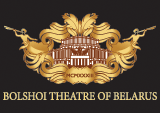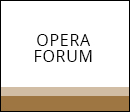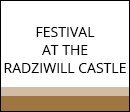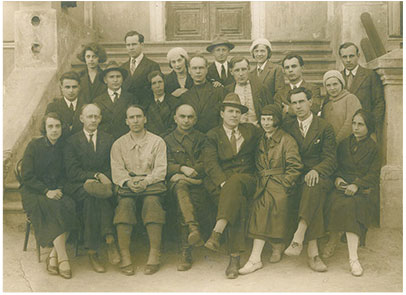┬Ā
Opera and Ballet of Belarus before the Opening of the Opera and Ballet Theatre.
┬Ā
The Opera and Ballet Theatre as an independent cultural association was formed in Belarus by the 1930s, but its appearance was prepared by a long history of the development of music and theatre arts, dating back several centuries.
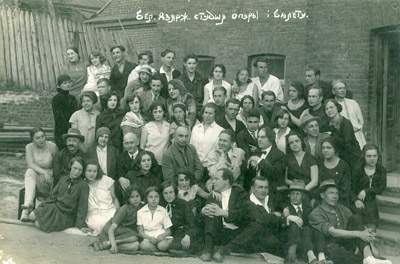
┬Ā
By the middle of the 18th century, a number of professional privately owned theatres with their own companies and ensembles operated in different cities and towns, including Nesvizh, Slonim, Ruzhany, Grodno, Shklov, Mogilev, etc. ’╝Ź the education, artistic taste and aesthetic claims of major Belarusian magnates contributed to the active development of theatrical culture. Mostly French and Italian operas and ballets were staged, while the magnates themselves often acted as authors and co-authors of new works. Among the first Belarusian operas one can find the works of Jan Dawid Holland, a kapellmeister Karol Stanis┼éaw Radziwi┼é┼é (Panie Kochanku), namely Agatka (1784, libretto by Maciej Radziwi┼é┼é) and Someone Else's Wealth Does Not Serve Anyone. Apollo the Legislator, or Reformed Parnassus, an opera by Raphael┬ĀVardotsky to the libretto by Michal┬ĀTetersky and other teachers of the Zabely Gymnasium, is the only monument of the so-called school theatre known today, can also be called one of the first examples of Belarusian opera.
┬Ā
Antoni Henryk Radziwi┼é┼é's opera (musical drama) Faust became a notable phenomenon not only in Belarusian history, but also in the culture of European romanticism; the libretto for the opera was specially created by Johann Wolfgang von Goethe. The opera was staged in Germany and did not leave the European stage for decades, but in the composerŌĆÖs homeland, it was presented only at the very end of the 20th century.
┬Ā
Stanis┼éaw MoniuszkoŌĆÖs Sielanka (Idyll) to the libretto by Wincenty Dunin-Marcinkiewicz, staged at the Minsk City Theatre in 1852, was the milestone in the development of national music and theatre arts; it is considered the starting point in the creation of national opera.
┬Ā
A number of privately owned theatres of the 18th century, such the Tyzenhauz Theatre in Grodno, the Radziwi┼é┼é Theatre in Nesvizh and Slutsk, the Ogi┼äski┬ĀTheatre in Slonim, the Zorich Theatre in Shklov, also had ballet companies and ballet schools. The history of the establishment of ballet as an independent genre (and this applies not only to Belarus) is specific in that ballet music was of an applied nature. Probably, this became one of the important prerequisites for the fact that information about the ballet culture of that time is extremely fragmentary: even the titles of ballets performed by these Belarusian ballet companies are practically unknown. Nevertheless, the extant information speaks of a high level of development of ballet art.
┬Ā
There is some information about the ballet repertoire of the 19th century. It is known that at that time the Maurice Pion Ballet of Vitebsk was founded and became famous. Its repertoire included The Wedding in Ojcow by Karol Kurpiński and Józef Damse, Two Statues by Józef Elsner, The Swiss Milkmaid by Adalbert Gyrowetz and Michele Enrico Carafa di Colobrano, The Magic Flute, or Involuntary Dancers by Makovets, The Antique Dealer, or The Fancy Dress Ball, Mimilla, Engagement, Theatromania, or The Mischief of Love.
┬Ā
The opening of a new building of the City Theatre, which was also called winter theatre, in 1890 in Minsk gave a powerful impetus to the rise of music and theatre.
┬Ā
In the first season, a highly professional company under the direction of the talented conductor Vyacheslav Suk worked there. Its operatic repertoire included 17 titles, and many new European works, such as Giuseppe VerdiŌĆÖs Otello, were immediately presented to the Belarusian audience.
┬Ā
By the way, Pietro MascagniŌĆÖs opera Cavalleria rusticana was staged at the Minsk City Theatre in 1892 ŌĆō in the same year when the opera was first performed in Paris and Warsaw. It was the second season of the theatre, and at that time, several dozen operas were staged there over such a short timespan. In 1904, Pietro Mascagni himself conducted the production of the opera at this venue.
┬Ā
In the 20th century, the development of Belarusian opera and ballet continued in close connection with the development of drama theatre: the company of the first Belarusian State Theatre, which eventually became the Yanka Kupala National Academic Theatre, consisted of opera soloists, chorus and ballet dancers. The search for talented staff (soloists, dancers, musicians, composers) stimulated the emergence of special musical educational institutions: thus, in 1924, the Belarusian State College of Music was founded, based on a music school that had existed since 1879; in 1925, a ballet programme was launched at the college, followed by the opening of an opera course in 1927.
┬Ā
Outstanding teachers, former soloists of the Bolshoi Theatre of Russia Vasily Tsvetkov and Anton Bonachich came in support of young singers and their work. Charles GounodŌĆÖs Faust, staged under the artistic direction of Arkady Bessmertny and performed in the Belarusian language, was the first opera production of the college.
┬Ā
The need to separate from the drama theatre became obvious, and in 1930, the Belarusian State Opera and Ballet Studio was opened on the basis of opera and ballet classes in Minsk, and became a good school of vocal and choreography for young Belarusian artists. Over three years, the studio trained a constellation of professional artists and produced the operas The Golden Cockerel by Nikolai Rimsky-Korsakov (1931) and Carmen by Georges Bizet (1932).
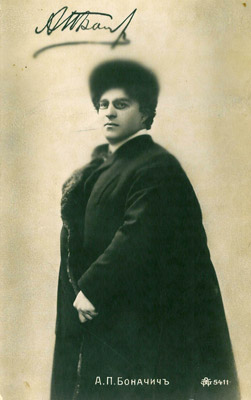
┬Ā
┬Ā
On 25 May 1933, the State Opera and Ballet Theatre was opened in Minsk. BizetŌĆÖs Carmen starring the brilliant Larisa Aleksandrovskaya in the title role was the first production of the theatre. Apart from Carmen, that year the audience enjoyed the productions of the operas Eugene Onegin and The Queen of Spades by Pyotr Tchaikovsky, The Tsar's Bride by Nikolai Rimsky-Korsakov, and the first ballet production, The Red Poppy by Reinhold Gli├©re.
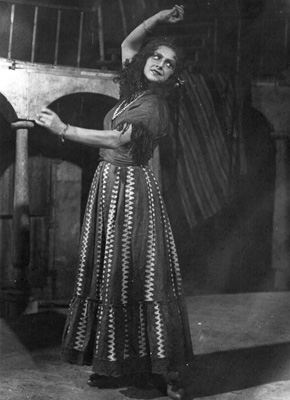
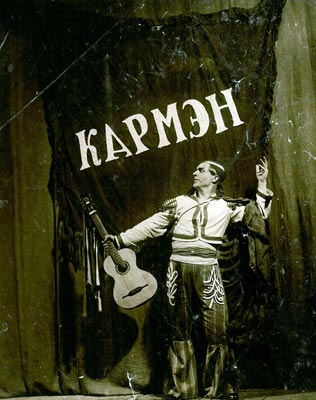
┬Ā
┬Ā
The first generation of the artistic and creative staff of the theatre included I.Gitgartz (artistic director), G.Petrov (conductor), O.Borisevich (director), L.Kramarevsky and K.Muller (choreographers); opera soloists L.Aleksandrovskaya, R.Mlodek, S.Druker, I.Bolotin, M.Denisov; ballet soloists A.Nikolaeva, T.Uzunova, Y.Khirasko, S.Drechin. In addition, the young company owed its rapid artistic evolvement to the great masters of Russian theatre, namely conductors N.Grubin and V.Piradov, directors I.Shlepyanov and B.Pokrovsky, choreographers F.Lopukhov and A.Ermolaev, designer S.Nikolaev.
┬Ā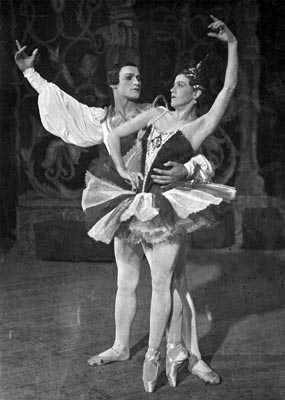
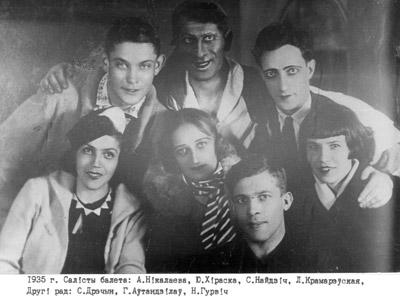
From 1933 to 1939, the theatre produced a number of classical masterpieces of the operatic repertoire, including Alexander BorodinŌĆÖs Prince Igor (1934, conductor I.Gitgartz, director B.Chernyavsky), Il barbiere di Siviglia by Gioachino Rossini (1934), Giuseppe VerdiŌĆÖs Rigoletto (1935), Tosca by Giacomo Puccini (1937), The Mermaid by Alexander Dargomyzhsky (1939).
┬Ā
There was a ballet studio at the theatre, where gifted children and participants of amateur ensembles from all over Belarus were engaged. The ballet company of the theatre consisted at that time of more than a hundred artists with a high professional training. The ballet premieres included Copp├®lia by┬ĀL├®o Delibes (1935), The Little Humpbacked Horse by Cesare Pugni (1936), Pyotr TchaikovskyŌĆÖs Swan Lake (1938), and La Fille mal gard├®e by Peter Ludwig Hertel (1939).
┬Ā
The Opera and Ballet Theatre of Belarus has always considered the creation of a national repertoire to be one of its main tasks; thus, it was the Belarusian piece ŌĆō the premiere of Yevgeny TikotskyŌĆÖs opera Mikhas Padhorny ŌĆō that on 10 March 1939 marked the opening of the new theatre building, constructed on Trinity Hill after the designs by the famous architect Iosif Langbard. The production of The Fountain of Bakhchisarai (choreography by Kasyan Goleizovsky to the music by Boris Asafiev), which opened the new 1939/1940 season, was the first ballet production presented on the new stage.
┬Ā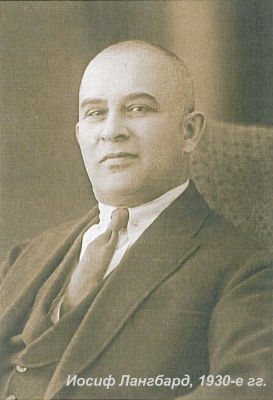
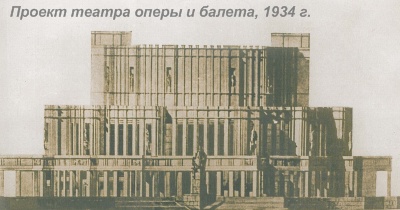
The 1930s made up a very fruitful period for the theatre: apart from the classical repertoire, the national operas In the Dense Forests of Palesse by Anatoly Bogatyryov, Mikhas Padhorny (the 2nd version) by Yevgeny Tikotsky and The Flower of Fortune by Aleksey Turenkov were produced. The staging of the first Belarusian ballet, The Nightingale by Mikhail Kroshner after Zmitrok BiadulaŌĆÖs tale, was another significant event that influenced our national culture as well as the theatre, marking the beginning of the history of national-themed ballet in Belarus.┬Ā
┬Ā
These productions were a great success during the Decade of Belarusian Art in Moscow in June 1940. The awarding of the title "Bolshoi" and the Order of Lenin in the same year evidenced recognition of the high level of the company and its exceptional reputation.
┬Ā
The premieres of the early 1940s included Madama Butterfly (Cio-Cio-San) by Giacomo Puccini (1940), Les contes d'Hoffmann by┬ĀJacques Offenbach (1941), Don Quixote by Ludwig Minkus (1941). La traviata by Giuseppe Verdi, which premiered on 22 March 1941, was the last pre-war production of the theatre.┬Ā
┬Ā
During the Great Patriotic War (1941-1945), many artists joined troops or partisans, created front-line ensembles and performed concerts for the soldiers. The Opera and Ballet Theatre was evacuated to the Volga Region (Gorky and Kovrov), where it continued its work.
┬Ā
Immediately after the liberation of the capital, the company returned to Minsk and in December 1944 opened the season with the premiere of Yevgeny TikotskyŌĆÖs opera Alesya. This event marked the revival of the National Opera and Ballet Theatre of Belarus. After the reconstruction and renovation of the theatre building damaged by bombing, its work resumed, and very soon the theatre again became one of the recognized leaders of the cultural space of the USSR. The highlights of the history of post-war national art included Vasily ZolotaryovŌĆÖs ballet Prince Lake (1949) and Dmitry LukasŌĆÖs opera Kastus Kalinouski (1947).┬Ā In 1948, a new production of Pyotr TchaikovskyŌĆÖs Swan Lake premiered.
┬Ā
In the 1950s, significant achievements of Belarusian theatre were associated with interpretations of opera classics: Ivan Susanin by Mikhail Glinka (1950), Faust by Charles Gounod (1950), The Demon by Anton Rubinstein (1950), Pagliacci by Ruggero Leoncavallo (1951), The Haunted Manor by Stanis┼éaw┬ĀMoniuszko (1952), Mazepa and Iolanta by Pyotr Tchaikovsky (1952), Boris Godunov by Modest Mussorgsky (1954), Nikolai Rimsky-KorsakovŌĆÖs Sadko (1957), etc. In 1953, Giuseppe VerdiŌĆÖs Aida was staged; one of the most popular productions of the theatre, it was successfully performed until 2008.
┬Ā
Classical ballets produced during that decade included La Esmeralda by Cesare Pugni (1951), Adolphe AdamŌĆÖs Giselle (1953) and Le Corsaire (1957), La Bayad├©re by Ludwig Minkus (1959), The Sleeping Beauty (1954) and The Nutcracker (1956) by Pyotr Tchaikovsky.
┬Ā
Meanwhile, the theatreŌĆÖs productions of modern pieces were no less significant; the highlights included operas And Quiet Flows the Don by Ivan Dzerzhinsky (July 1951 and new edition in November 1951), The Young Guard by Yuliy Meitus (1954), Marynka by Grigory Pukst (1955), Nadzeya Durava by Anatoly┬ĀBogatyryov (1956), Kupala Night (1956) and Fair Dawn (1958) by Aleksey┬ĀTurenkov, and ballets A┬ĀTale of Love (1953) and Ardent Hearts (1955) by Vasily┬ĀZolotaryov, and False Bride by Heinrich┬ĀWagner (1958).
┬Ā
The Development of the Theatre in the 1960s-2000s: Opera
┬Ā
The 1960s were a period of intense development of Belarusian music and expansion of the thematic palette of productions. In 1964, the title "academic" was conferred on the Bolshoi Opera and Ballet Theatre for its significant contribution to Belarusian culture.
┬Ā
During this and subsequent decades, along with further staging of world classical masterpieces, the development of the national opera and ballet repertoire continued. New figurative and stylistic tendencies were manifested in the works of Heinrich┬ĀWagner, Sergey Kortes, and Dmitry Smolsky. The penchant for song lyrics was embodied in the works of Yury Semenyako, in particular, in his comic opera Prickly Rose (1960), the first work of this genre in Belarus in the 20th century.
┬Ā
In the 1960s, the basis of the operatic repertoire was formed and included Giuseppe Verdi's Un ballo in maschera (1961), Aida (revival in 1962 and 1971), Otello (1963), Il trovatore (1964), Rigoletto (1968), La traviata (1969); La Gioconda┬Āby┬ĀAmilcare Ponchielli┬Ā (1962), Betrothal in a Monastery by Sergey Prokofiev (1962), Raphael by Anton Arensky (1963), L'elisir d'amore by Gaetano Donizetti (1965), La boh├©me by Giacomo Puccini (1968). The grandiose production of Sergey TaneyevŌĆÖs opera Oresteia, prepared by conductor Tatyana Kolomiytseva and director Dmitry Smolich in 1963, was the most important event in the history of the theatre of this period.
┬Ā
In the 1970s-1980s, the traditional school of vocal, directing and scenography was enriched with elements of modern theatre. The most important role here was played by director Semyon (Samuel) Stein, whose productions of The Star of Venus by Yury Semenyako (1970), The Golden Cockerel by Nikolai Rimsky-Korsakov (1971), Charles GounodŌĆÖs Faust (1972), Modest MussorgskyŌĆÖs Boris Godunov (1975), among others, were distinguished by the diversity, scale and depth of interpretation. The introduction of Belarusian opera to the pan-European opera process, largely due to the professional and personal qualities of the director and his staging activities outside the country, was undoubtedly Semyon SteinŌĆÖs unconditional merit.
┬Ā
At this period, the operas Don Giovanni by Wolfgang Amadeus Mozart (1973) and Lohengrin by Richard Wagner (1977) were staged for the first time at the theatre. The productions of Cavalleria rusticana by Pietro Mascagni (1973) and Don Carlos by Giuseppe Verdi (1979) were especially successful. Among the operatic highlights of the 1980s, one can find two pieces by Sergey Prokofiev, namely the monumental production of War and Peace (1985) and the first production of Maddalena in the USSR (1989). In 1987, Richard Strauss's opera Der Rosenkavalier was staged for the first time in Belarus.
┬Ā
The national operatic repertoire in these years was represented by Nikolai AladovŌĆÖs Andrey Kastsenya (1970), the massive and cutting-edge in respect of the musical and production style Giordano Bruno by Sergey Kortes (1977), and Life Path by Heinrich Wagner (1980). The staging of Dmitry SmolskyŌĆÖs historical and psychological opera The Grey Legend was a particular success (1978; in 1980 it was awarded the State Prize of the Republic of Belarus). In general, the turn of the 1970s-1980s was a crucial period in the development of Belarusian opera. Staged at the Bolshoi Theatre of Belarus, the operas by Sergey Kortes, Dmitry Smolsky, Heinrich Wagner marked a new understanding of the genre, the enrichment of its musical and theatrical poetics, dramaturgical principles and language style. The New Land, an opera by Yury Semenyako, was staged to celebrate the 100th anniversary of Yakub KolasŌĆÖs birth (1982). The end of the 1980s was marked by the appearance of one of the best national works, King StakhŌĆÖs Wild Hunt, an afflated romantic opera by Vladimir Soltan based on the story by Uladzimir Karatkevich (1989; in 1990 it was awarded the State Prize of the Republic of Belarus).
┬Ā
The turn of the 1980s-1990s was marked by the creation of two important ensembles: in 1989, with a view to engage the children's chorus and extras in performances, the Children's Musical Theatre Studio was formed, whose artists took part in the premiere of the musical Peter Pan by Alexander Budko (1990), which eventually had a very long (about 20 years) stage life; in 1992, the Belarusian Capella was formed, whose scientific, publishing and concert activities were aimed at reviving ancient Belarusian music. Over the years of its work, valuable archival materials have been returned to scientific and cultural use; hundreds of pieces have been performed; collections of music, sheet work and research material have been published; programmes for radio and television have been recorded.
┬Ā
The 1990s were characterized by new versions of operas, as well as classical foreign operas performed in the original language for the first time. Giacomo PucciniŌĆÖs Tosca (1991) and Gaetano DonizettiŌĆÖs Lucia di Lammermoor (1999), performed in Italian, were among the first of such productions. Other highlights of this period include La traviata by Giuseppe Verdi (1997), Pagliacci by Ruggero Leoncavallo (1999), Prince Igor by Alexander Borodin (1994). The Master and Margarita by Eugene Glebov (1992), specially renewed in 1996 for presentation at the Republican Festival "Music and Theatre", and Lady Macbeth of Mtsensk by Dmitry Shostakovich (1994) were among the most innovative productions of this period. The Belarusian operas staged over these years include Prince of Novogrudok by Andrey Bondarenko (1992), The LadyŌĆÖs Visit by Sergey Kortes (1995). In 1994, Jan Dawid Holland's Agatka, or the MasterŌĆÖs Arrival was recorded.
┬Ā
The theatreŌĆÖs operatic repertoire of the early 2000s was augmented by Giuseppe VerdiŌĆÖs Il trovatore (2001), Modest MussorgskyŌĆÖs Boris Godunov (2001), Giacomo PucciniŌĆÖs La boh├©me (2002), Khovanshchina by Modest Mussorgsky (2003), and Gennady GladkovŌĆÖs opera for children The Town of Craftsmen. The practice of concert performances continued, and thanks to it, Giacomo PucciniŌĆÖs Turandot was performed for the first time in Belarus (2002). The production of Khovanshchina was acknowledged by the musical community and the audience as a serious artistic success of the company; in April 2004, the production was performed on the New Stage of the Bolshoi Theatre in Moscow. New works by Belarusian composers included The Jubilee (2002) and The Bear (2011) by Sergey Kortes, The Diary of a Madman by Vyacheslav Kuznetsov (2005), Bluebeard and His Wives by Viktor Kopytsko (2006), etc.
┬Ā
┬Ā
The Development of the Theatre in the 1960s-2000s: Ballet
┬Ā
The ballet repertoire of the Bolshoi Theatre of Belarus is also distinguished by heterogeneity and diversity: over the decades of the theatre's existence, both classical productions, which are a kind of markers of high style, evidence of the orientation of the Belarusian ballet school towards classical traditions, and new titles that open national art to the audience are inherent in the repertoire.
┬Ā
Composer Eugene Glebov made a substantial contribution to the heritage of Belarusian ballet. The following ballets by the composer were staged at the theatre: The Dream (1961), The Alpine Ballad (1967), The Chosen One (1969), Barrow (1982), Till Eulenspiegel (1974; 2004 ŌĆō The Legend of Eulenspiegel) and Le Petit Prince (2016).
┬Ā
Many Belarusian composers turned their attention to the ballet genre, including Vasily Zolotaryov, Heinrich Wagner, Vladimir Kondrusevich, Oleg Zaletnev, etc. Andrei Mdivani's Passions (Rogneda), staged at the Bolshoi Theatre of Belarus by Valentin Elizariev in 1995, was one of the most striking national productions of the late 20th century. In 1996, Valentin Elizariev was awarded the Benois de la Danse Prize for his production of Rogneda. This production also brought the creative team the State Prize of the Republic of Belarus.
┬Ā
Works by Vyacheslav Kuznetsov have occupied a significant place in the Belarusian ballet repertoire of recent decades. In 2000, his Macbeth, a symbolic and allegorical interpretation of William ShakespeareŌĆÖs tragedy, was staged.
┬Ā
The defining position in the development of Belarusian ballet belongs to the work of Valentin Elizariev. The choreographer's innovative views, his bold, topical productions, full of metaphorical and choreographic diversity, are enthusiastically welcomed all over the world. Already his first production, Carmen Suite by Georges Bizet - Rodion Shchedrin (1974), became a breakthrough to associative and philosophical choreography, to the comprehension of modern means of expression. The Creation of the World by Andrey Petrov (1976; revival in 1998), Till Eulenspiegel by Eugene Glebov (1978), Spartacus by Aram Khachaturian (1980), The Nutcracker by Pyotr Tchaikovsky (1982), Carmina Burana by Carl Orff (1983), Bol├®ro by Maurice Ravel (1984), The Rite of Spring by Igor Stravinsky (1986 and 1997), Romeo and Juliet by Sergey Prokofiev (1988), Passions (Rogneda) by Andrey Mdivani (1995), The Firebird by Igor Stravinsky (1998) demonstrated a special type of ballet dramaturgy based on the end-to-end development of action, metaphoricity and the variety of plastique, subtle interaction of choreography and music with scenography.
┬Ā
The high artistic level of the theatre in different periods was maintained by numerous celebrated conductors, including Iosif Abramis, Onisim Bron, Lev Liubimov, Tatiana Kolomiytseva, Yaroslav Voshchak, Vladimir Moshensky, Gennady Provatorov, Alexander Anissimov, Viktor Ploskina; noted directors, including Oleg Moralev, Dmitry Smolich, Yury Yuzhentsev, Semyon Stein, Vyacheslav Tsyupa, Margarita Izvorska-Elizarieva, Mikhail Pandzhavidze; as well as outstanding designers, namely Sergei Nikolaev, Eugene Chemodurov, Ernst Heidebrecht, Eugene Zhdan, Vyacheslav Okunev, and Alexander Kostiuchenko.
┬Ā
┬Ā
The Bolshoi Theatre of Belarus after the Reconstruction
┬Ā
After the 72nd season (2004-05), the reconstruction of the theatre building began. The renovated building was opened on 8 March 2009; Belarusian President Aleksandr Lukashenko took part in the grand opening of the Bolshoi Theatre. On 12 May 2010, the Metropolitan Bishop of Minsk and Slutzk, Patriarchal Exarch of all Belarus, Philaret consecrated the National Academic Bolshoi Opera and Ballet Theatre of the Republic of Belarus.
┬Ā
A new stage in the theatre's activities, which began after the reconstruction, included a number of significant events, such as the opening of the Larisa Aleksandrovskaya Chamber Hall (originally the Musical Lounge, 2009), the creation of an apprentice group of young opera soloists (2011), performances on the Small Ballet Stage (since 2012), opening of branch venues of the Bolshoi Theatre of Belarus in Mogilev, Novopolotsk and Gomel, joining the European association of opera companies and festivals Opera Europa (2015-2020), as well as the launch of major international projects, most of which are successfully implemented at present.
┬Ā
The productions of the operas Il trovatore (2009) and Nabucco (2010) by Giuseppe Verdi, Tosca by Giacomo Puccini (2010), The Snow Maiden by Nikolai Rimsky-Korsakov (2011), Giuseppe VerdiŌĆÖs Aida (2011), Il barbiere di Siviglia by Gioachino Rossini (2011), Kashchei the Immortal by Nikolai Rimsky-Korsakov (2012) etc. were among outstanding premieres that marked the beginning of a new era of the theatre.
┬Ā
In June 2009, the Belarusian comic opera Someone Else's Wealth Does Not Serve Anyone by Jan Dawid Holland, reconstructed by Vladimir Baidov and Viktor Skorobogatov according to the composer's authentic scores, was premiered. The work was awarded the Special Prize of the President of the Republic of Belarus for workers of culture and art. The staging of the second version of Dmitry SmolskyŌĆÖs opera The Grey Legend in 2012 was another important event; its production team received the State Prize of the Republic of Belarus for their work.
┬Ā
The 2010s brought many significant premieres to Belarusian opera art and national cultural life, including Turandot by Giacomo Puccini (2013), Der fliegende Holl├żnder by Richard Wagner (2013), Carmen by Georges Bizet (2015) , The Queen of Spades by Pyotr Tchaikovsky (2014), Die Zauberfl├Čte by Wolfgang Amadeus Mozart (2017), La traviata by Giuseppe Verdi (2017), La boh├©me by Giacomo Puccini (2018), Die Fledermaus by Johann Strauss (2019), Salome by Richard Strauss (2018), Prince Igor by Alexander Borodin (2019), etc.
┬Ā
In the 2010s, the ballet repertoire actively expanded, too: new national ballets appeared, classical productions were revived and edited, new titles and new names were discovered. The premieres of this period included Cinderella by Sergey Prokofiev (2009), Tristan and Isolde to the music of Richard Wagner (2010), La Sylphide by Herman L├Ėvenskiold (2011), Giselle by Adolphe Adam (2012), Valery GavrilinŌĆÖs Anyuta (2012), Kara KaraevŌĆÖs Seven Beauties (2013), Love and Death by Polad B├╝lb├╝lo─¤lu (2016), Orr and Orra by Mikhail Krylov (2017), Anna Karenina to the music of Pyotr Tchaikovsky's symphonies (2019). The repertoire of the Bolshoi Theatre of Belarus was adorned with the so-called black and white ballets Sechs T├żnze (2013) and Petite Mort (2016) by the iconic Czech and Dutch choreographer Ji┼Ö├Ł Kyli├Īn to the music of Wolfgang Amadeus Mozart.
┬Ā
The palette of modern Belarusian ballet was complemented by the bright colours of the Russian choreography of the silver age, namely Scheherazade to the music by Nikolai Rimsky-Korsakov (2011), Serenade to Pyotr TchaikovskyŌĆÖs music (2012), Thamar to the music by Mily Balakirev (2011), The Firebird (2014) and Petrushka (2018) by Igor Stravinsky. The staging of Vyacheslav Kuznetsov's ballets dedicated to important figures of national history, namely Vitaut (2013) and Anastasia (2018), was among significant events of the period. The ballets reveal the theme of personality in history and emphasize universal values, such as nobility, love, morality, fortitude, patriotism, self-sacrifice and moral purity. The ballets Waiting Room by Oleg Khodosko (2012), Who Am I? by Sergey Kortes (2015) and Metamorphoses to the music of Johann Sebastian Bach (2012) were produced on the Small Stage.
┬Ā
In the early 2020s, the opera repertoire was embellished with new titles, and some of them appeared there for the first time. The premieres include Le Villi. Fatum by Giacomo Puccini (2020), Faust by Charles Gounod (2020), Samson et Dalila by Camille Saint-Sa├½ns (2021), L'elisir d'amore by Gaetano Donizetti (2022), chamber operas Bastien und Bastienne by Wolfgang Amadeus Mozart (2021), and Mozart and Salieri by Nikolai Rimsky-Korsakov (2022). The return of the iconic Belarusian piece King StakhŌĆÖs Wild Hunt by Vladimir Soltan, staged again in 2021, was long-awaited. The children's new repertoire includes The Cat's House by Pavel Valdgardt (2020), Pinocchio by Gloria Bruni (2020), The Story of Kai and Gerda (The Snow Queen) by Sergei Banevich (2022).
┬Ā
In the early 2020s, important and painstaking work was carried out to prepare new versions of the classical ballet repertoire, including Pyotr Tchaikovsky's famous ballet triptych, namely The Nutcracker (2020), Swan Lake (2021), The Sleeping Beauty (2022), as well as Adolphe AdamŌĆÖs Giselle (2022), and Ludwig MinkusŌĆÖs Don Quixote (2023). New rare titles appeared, such as Peer Gynt to the music of Edvard Grieg (2020) and The Little Humpbacked Horse by Rodion Shchedrin, which was staged for the first time in Belarus in 2021.
┬Ā
Currently, the repertoire of the Bolshoi Theatre of Belarus comprises about 90 operas and ballets (national productions, masterpieces of world classics, modern productions), from 4 to 6 productions being annually created by the theatre.
┬Ā
High international demand of the Bolshoi Theatre of Belarus is evidenced by the success of its ensembles during their tours in┬Āover 30 countries.
┬Ā
Over 30 memoranda of understanding with major theatres worldwide have been signed.
┬Ā
┬Ā
┬Ā
Projects of the Bolshoi Theatre of Belarus:
┬Ā
- The Big New YearŌĆÖs Ball at the Bolshoi (since 2010)
- The Open-Air Opera and Ballet Festival ŌĆ£Evenings of the Bolshoi Theatre at the Radziwill CastleŌĆØ (since 2010)
- Parterre magazine (2010-2020)
- The Minsk International Christmas Opera Forum (since 2010)
- International Opera Forum of the CIS Countries (2012)
- International Competition Competizione dellŌĆÖOpera (2012)
- Christmas Charity Book Ball (2013)
- The Great Encyclopedia of the Bolshoi Theatre of Belarus (2013)
- Minsk International Christmas Singing Competition (2014, 2015, 2016, 2017 and 2018)
- Bolshoi Theatre for Children (since 2014)
- Ballet Summer at the Bolshoi (since 2014)
- Competition ŌĆ£Christmas Tree Family DecorationŌĆØ (since 2014)
- Open Day marking the theatreŌĆÖs anniversary (since 2015)
- Youth Programmes of the Bolshoi (since 2016)
┬Ā
┬Ā
Awards and Prizes of the Bolshoi Theatre of Belarus
┬Ā
State Prize of the Republic of Belarus
2013
Nina Sharubina for her outstanding achievements through vocal and performing skills of high aesthetic value and a significant contribution to the Belarusian national culture
┬Ā
2017
Production team and performers of Dmitry SmolskyŌĆÖs opera The Grey Legend, namely Oksana Volkova, Anastasia Moskvina, Stanislav Trifonov, Sergey Frankovsky, Nina Lomanovich, Alexander Kostiuchenko
┬Ā
Prize of the President of the Republic of Belarus ŌĆ£For Spiritual RevivalŌĆØ
2014
Bolshoi Theatre of Belarus team for the production of the ballet Vitaut (music by Vyacheslav Kuznetsov, choreography by Yury Trayan)
┬Ā
┬Ā
Special Prize of the President of the Republic of Belarus to Art Luminaries
1998
Valentin Elizariev for his achievements in the field of choreography and contribution to the development of international relations of the Republic of Belarus
┬Ā
2001
Valentin Elizariev for his achievements in the field of choreography and contribution to the development of international relations of the Republic of Belarus
┬Ā
2009
Creative team of Jan Dawid HollandŌĆÖs opera Someone Else's Wealth Does Not Serve Anyone
┬Ā
2012
Creative team of Dmitry SmolskyŌĆÖs opera The Grey Legend
┬Ā
2015
Creative team of The TsarŌĆÖs Bride by Nikolai Rimsky-Korsakov
┬Ā
2022
Vladimir Gromov for his artful interpretation of characters in the 2020/2021 premieres of the Bolshoi Theatre of Belarus
┬Ā
2023
Anastasia Moskvina for her outstanding professionalism and exceptional achievements in the field of music and theatre
┬Ā
National Theatre Prize
2010
Best Belarusian Production: Nabucco by Giuseppe Verdi
Contribution to Art: Valentin Elizariev
┬Ā
2012
Best Musical Production: Aida by Giuseppe Verdi
┬Ā
2014
- Best Opera Production: Der fliegende Holl├żnder by Richard Wagner
- Best Ballet Production: Vitaut by Vyacheslav Kuznetsov
- Best Director of an Opera Production: Hans-Joachim Frey, Der fliegende Holl├żnder by Richard Wagner
- Best Staging Work in a Ballet Production: Yury Trayan, Vitaut by Vyacheslav Kuznetsov
- Best Male Role in an Opera Performance: Stanislav Trifonov for his interpretation of the Dutchman in Der fliegende Holl├żnder by Richard Wagner
- Best Female Role in a Ballet Performance: Liudmila Khitrova for her interpretation of Anna in Vitaut by Vyacheslav Kuznetsov
┬Ā
2016
- Best Ballet Production: Le Petit Prince by Eugene Glebov
- Best Opera Production: The TsarŌĆÖs Bride by Nikolai Rimsky-Korsakov
- Best Male Role in a Ballet Performance: Konstantin Geronik for his interpretation of the title role in Le Petit Prince by Eugene Glebov
- Best Male Role in an Opera Performance: Stanislav Trifonov for his interpretation of Grigory Gryaznoy in The TsarŌĆÖs Bride by Nikolai Rimsky-Korsakov
- Best Female Role in an Opera Performance: Oksana Volkova for her interpretation of the title role in Georges BizetŌĆÖs Carmen
- Best Female Role in a Ballet Performance: Liudmila Khitrova for her interpretation of the title role in Laurencia by Alexander Krein
┬Ā
2018
- Best Opera Production: La boh├©meby Giacomo┬ĀPuccini
- Best Designer of a Musical Production: Alexander Kostiuchenko, Tosca by Giacomo┬ĀPuccini
- Best Male Role in a Musical Production: Vladimir Gromov for his interpretation of Marcello in La boh├©meby Giacomo┬ĀPuccini
- Best Female Role in a Musical Production: Irina Eromkina for her interpretation of Baijan in Love and Death by Polad B├╝lb├╝lo─¤lu
┬Ā
2021
- Best Ballet Production: Anna Karenina to the music by Pyotr Tchaikovsky
- Best Opera Production: Faust by Charles Gounod
- Best Conductor of a Musical Production: Alexander Anissimov, Peer Gynt by Edvard Grieg
- Best Director of a Musical Production: Anna Motornaya, Faust by Charles Gounod
- Best Female Role in a Musical Production: Irina Eromkina for her interpretation of the title role in Anna Karenina to the music by Pyotr Tchaikovsky
- Special prize ŌĆ£For a Longstanding Service to the StageŌĆØ: artistic director of the Bolshoi Theatre of Belarus Valentin Elizariev
┬Ā
2023
- Best Ballet Production: Don Quixote by Ludwig Minkus
- Best Opera Production: King StakhŌĆÖs Wild Hunt by Vladimir Soltan
- Best Production for Young Audiences: The Story of Kai and Gerda (The Snow Queen) by Sergei Banevich
- Best Conductor of a Musical Production: Yuri Karavaev, The Story of Kai and Gerda (The Snow Queen) by Sergei Banevich
- Best Director of a Musical Production: Anna Motornaya, King StakhŌĆÖs Wild Hunt by Vladimir Soltan and The Story of Kai and Gerda (The Snow Queen) by Sergei Banevich
- Best Designer of a Musical Production: Vyacheslav Okunev, Don Quixote by Ludwig Minkus
- Best Female Role in a Musical Production: Liudmila Khitrova for her interpretation of Kitri in Don Quixote by Ludwig Minkus
┬Ā
UNESCOŌĆÖs commemorative medal "Five Continents"
2014
The Bolshoi Theatre of Belarus for its outstanding contribution to the popularization of dance and opera around the world and on the occasion of the 60th anniversary of Belarus' membership in the United Nations on the matters of education, science and culture
┬Ā
Additional Honours and Recognitions
2010
The official website of the Bolshoi Theatre of Belarus won first place in the ŌĆśCulture and ArtŌĆÖ category at the TIBO-2010 Internet Award contest for the best Internet resource
2013
The Parterre magazine (project of the Bolshoi Theatre of Belarus) won the 11th national competition of print media ŌĆ£Golden LetterŌĆØ
2022
The Bolshoi Theatre of Belarus won the National Competition for the Best Organization of Work by State Organizations Subordinate to the Ministry of Culture.
The production of Vladimir Soltan's opera King StakhŌĆÖs Wild Hunt was recognized as the best cultural project on a patriotic theme in the category ŌĆśBest Production of a Musical TheatreŌĆÖ.
2023
The Bolshoi Theatre of Belarus won the National Competition for the Best Organization of Work by State Organizations Subordinate to the Ministry of Culture.
The Bolshoi Theatre of Belarus received a Certificate of Honour from the Council of Ministers of the Republic of Belarus in recognition of its outstanding creative achievements and significant contributions to the development of national theatrical art.
2024
The project Path├®tique Memory Book won the National Competition for the Best Cultural Project on a Patriotic Theme 2024 in the category ŌĆśBest Production on a Patriotic ThemeŌĆÖ.
2025
The Bolshoi Theatre of Belarus received the Jubilee Gold Medal from the International Union of Music Workers, which established this award to mark the centenary of the great Russian singer Irina ArkhipovaŌĆÖs birth.
┬Ā
Union State Literature and Art Prize
2017-2018
Artistic director of the Bolshoi Theatre of Belarus Valentin Elizariev for his ballet productions from 1974 to 2017 (including The Creation of the World, Spartacus, Romeo and Juliet, Don Quixote, etc.)
┬Ā
Other Prizes and Awards of the Bolshoi Theatre of Belarus:
2010
The official website of the Bolshoi Theatre of Belarus won first prize in the nomination "Culture and Art" following the results of the contest for the best Internet resource ŌĆ£TIBO-2010 Internet AwardŌĆØ
2013
The Parterre magazine won the 11th national competition of print media ŌĆ£Golden LiteratureŌĆØ
┬Ā
┬Ā
ARCHIVE OF THE NATIONAL ACADEMIC BOLSHOI OPERA AND BALLET THEATRE OF THE REPUBLIC OF BELARUS
┬Ā
The history of every establishment is thoroughly documented and recorded; for this purpose, archives are opened where historical records are stored.┬Ā
┬Ā
Administrative and personnel documents dating from 1933 and personnel documents dating from 1942 have been collected, processed and stored at the archive of the Opera and Ballet Theatre; meanwhile, permanent storage documents are passed to the Belarusian State Archive-Museum of Literature and Art.
┬Ā
A special attention is paid to the collecting and storage of documents relating to the theatreŌĆÖs main artistic activity.
┬Ā
The history of the theatre started long before its official opening. The first page of the history was Belarusian Musical College where the first Opera High Class was founded by Anton Bonachich who was its first leader and organizer. On the basis of this class in October 1930 the Belarusian Studio of opera and ballet was created with the aim of preparing the opening of the Opera and Ballet Theatre. In 1933, the Studio was reorganized into the theatre.
┬Ā
Numerous posters, programmes, pictures, articles dating from 1926 up to now are stored at the archive. A lot of historical documents were collected but most of them were stolen or damaged by German invaders. When the artists and staff returned to Minsk after the liberation of the capital, the revival of the theatre began, new productions appeared, and new posters and programmes were made. Photographers made pictures of performances, reviews were written. All those records and materials, including the ones that were given by artists, were thoroughly collected and stored.
┬Ā
Today the archives of the theatre contain all official documents and a rich collection of posters, programmes, pictures, published articles about the theatre that cover all the years of its history.┬Ā
┬Ā
